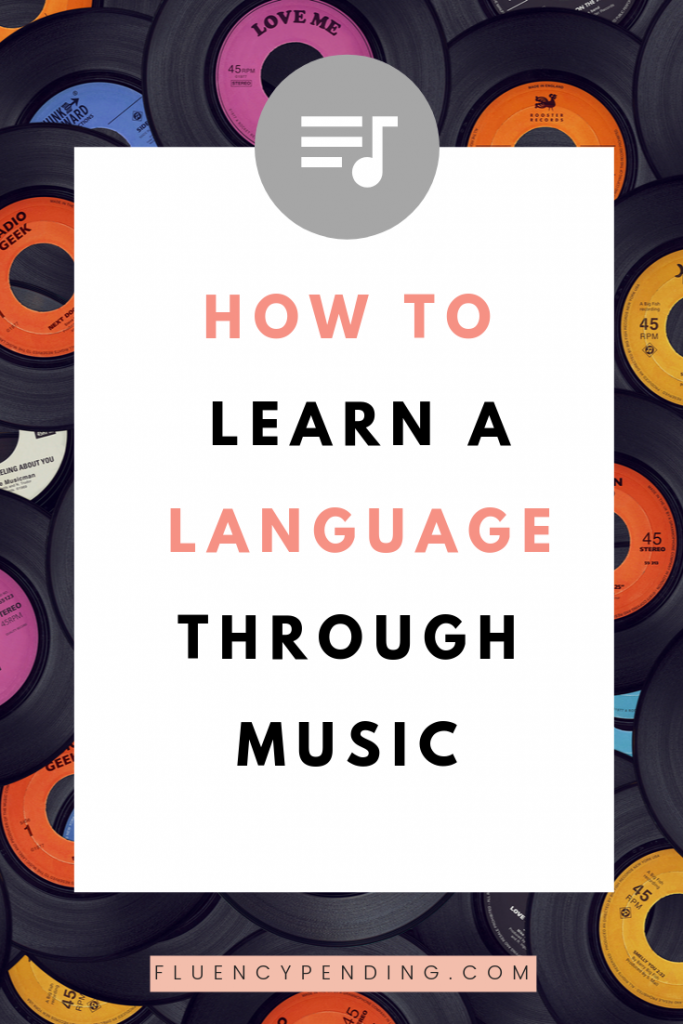
How to Learn a New Language Through Music
Music can be a great way to learn vocabulary and grammar points in a new language. I’ve been listening to a lot of Mandopop recently and it’s a really fun way to learn!
Here’s how I am using songs as a language learning study aid.
These steps are focused on Mandarin because that’s what I’m learning at the moment, but it can be applied to other languages in general.
Step 1: Find a song that you like.
First, let’s find you a good song.
You might have a very sophisticated taste in music usually, but don’t be too selective during this step. When it comes to language learning, earworms are preferable. I recommend good old Pop. Catchy tunes with a good hook are great, because the more they get stuck in your head, the more you learn.
Here’s where to find music in your target language:
Apple Music/Spotify/Google Play
I use Apple Music and they have a good selection of Taiwanese artists. A simple search for
‘Mandopop’ will return some decent curated playlists that are updated regularly.
Television and movie soundtracks
This is probably my biggest source of new music. I watch a lot of Taiwanese and Chinese dramas (check out Viki) and whenever I hear a song that catches my attention, I head straight to Google to track it down. Wikipedia usually lists the theme songs for television shows and movies.
YouTube
YouTube is great for MVs and videos with Pinyin lyrics. Here are a few of my favourites to get you started.
Rosie & 余楓- Why Not Love
G.E.M – Tik Tok
Jolin Tsai – Hubby
This music video is hilariously slapstick!
Namewee ft. Leehom Wang – Stranger in the North
A-Yue – Love Me, Don’t Go
Nickthereal – HEY需要你的美!
This series by Mandarin HQ’s Angel Huang
Mandarin HQ has a lot of really useful content, including this two-part series introducing readers to popular Chinese songs.
6 Catchy Chinese Songs to Help You Learn Mandarin (Part 1) – Mandarin HQ
6 More Chinese Songs to Help You Learn Mandarin (Part 2) – Mandarin HQ
Be sure to find a song that you actually like, because you are going to listen to it a lot. See step 2…
Step 2: Listen to it ad nauseum
I like to live with the song for a while before actively starting to cram vocab and grammar. Don’t worry about understanding every single word at this stage. Just enjoy and try to take in as much as you can.
I suggest adding a bunch of songs in your target language to a dedicated playlist and listening to it as you please. You’ll soon hit on your favourite song.
Step 3: Find the lyrics
Once you are familiar with the song, it’s time to find the lyrics – preferably with Pinyin and translations in your native language. For this, Google is your friend. Have a bit of a browse using keywords such as ‘song name’, ‘artist name’, ‘lyrics’, ‘Pinyin lyrics’, etc.
Apple Music includes the lyrics for songs, but most of the artists I have found on there are Taiwanese. This means that the lyrics are mostly in traditional characters, which I still struggle with (read: I am completely illiterate). If you are learning traditional characters or another language, this may be a good option for you.
Apple has me locked up pretty tightly in their ecosystem, so I am not sure if music platforms like Spotify or Google Play offer a lyrics function. Let me know if you use these platforms!
Step 4: Read through
Next, have a read through the lyrics to gauge how much of it you can understand. See if you can deduce meaning even if you don’t recognize all the words.
I like to take this ‘first pass’ approach because it is a good way to practice deriving meaning from context. This is a particularly useful skill to have when chatting with native speakers, because you can’t pause a conversation to consult a dictionary and sometimes need to get by with just the gist of the conversation.
Step 5: Get to grips with new vocabulary and grammar
Now for the actual studying part. Read through the lyrics again carefully. Highlight any unknown words, look them up in the dictionary and record them to review later. I like to save new vocabulary in my Pleco app, but you may prefer to add them to your Anki deck, handwritten flashcards, vocab spreadsheet or notebook – whatever works for you.
For any unknown grammar patterns, I head over to the Chinese Grammar Wiki for review. If you have a teacher or tutor, you can ask them to explain in your next class.
Step 6: Review
Now that you are more familiar with the vocabulary and grammar, have a listen again to see how much you’ve retained. Bonus points if you can sing along!
Step 7: Rinse and repeat
Find a new song to learn and keep going.
How do you use music to learn? What are you listening to at the moment?






2 Comments
David Moisan
October 13, 2019 at 11:04 pm
I’ve used this strategy to learn French and Dutch. I did some things different, though:
I got my music from Internet radio; I listened to Chante France and 100% NL more or less constantly. You will become VERY immersed in the culture whether you realize it not!
When I heard a song I liked, I went to the station’s website–most of them have a playlist. Then I looked it up on YouTube.
Then, if I still liked the song, I looked up the lyrics. At this point, you should learn the words for “song lyrics” in your target language. In French, the word is “paroles”, and in Dutch, “songtekst”.
I used a search engine to find lyrics and copied them to a notebook application.
Then I played the song over and over and even sang along to it! This helps a lot, especially if you mix up different artists.
Last step was to translate the lyrics.
If you don’t want to love the culture of your target language, don’t do this! Just a warning.
Elzette
October 14, 2019 at 9:03 am
Using radio is a great tip, David! Dutch is on my list of languages to learn. It’s very close to my native language, Afrikaans. I’ll definitely check out 100% NL when I start.
Comments are closed